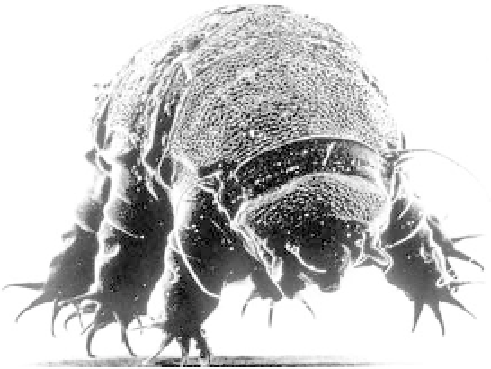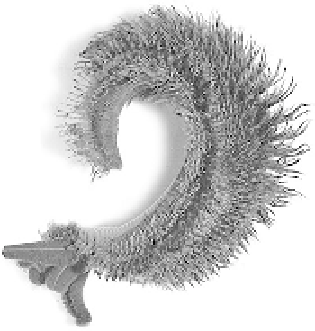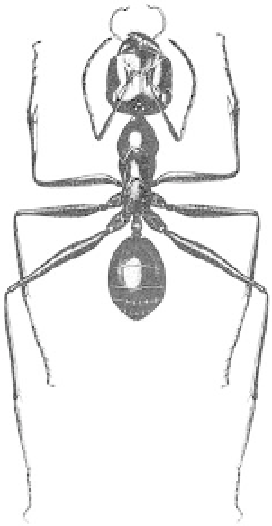Environmental Engineering Reference
In-Depth Information
4.3 Three remarkable extremophiles. Left to right: Echiniscus
arctomys (a tardigrade), Alvinella pompejana (a polychaete
worm), and a Saharan Cataglyphis ant. From Smil (2002).
heat-tolerant. One marine eukaryotic organism comes
close to the extreme heat tolerances of microbes. The
Pompeii worm (Alvinella pompejana) is a 6-cm-long,
shaggy creature that colonizes the sides of active deep-
sea hydrothermal vents; temperatures within its tubes av-
erage 69
C, and spikes exceed 81
C (fig. 4.3) (Cary,
Shank, and Stein 1998).
Even the most heat-tolerant Saharan desert ant of
genus Cataglyphis (fig. 4.3), able to forage during the
midday heat, has critical thermal maxima at 53
C-55
C
(Gehring and Wehner 1995). Optimal body tempera-
tures required for feeding, reproduction, and growth of
terrestrial animals are restricted mostly to 36
C-42
C.
Mammalian enzymes pass their optima as body tempera-
tures approach 50
C, lipids change, and cell membranes
become increasingly permeable (Spotila and Gates 1975).
That is why endotherms in hot environments have
evolved remarkable adaptations. Sweating and panting
are the best active responses; dealing with heat is closely
related to the management of water balance (Schmidt-
Nielsen 1972). Small desert rodents as well as camels re-
duce water loss by using countercurrent heat exchange in
respiratory passages to cool the exhaled air to tempera-
tures much lower than their body cores (Walsberg 2000).
Some desert rodents and birds resort to estivation
(torpidation), a lethargic state similar to hibernation.






